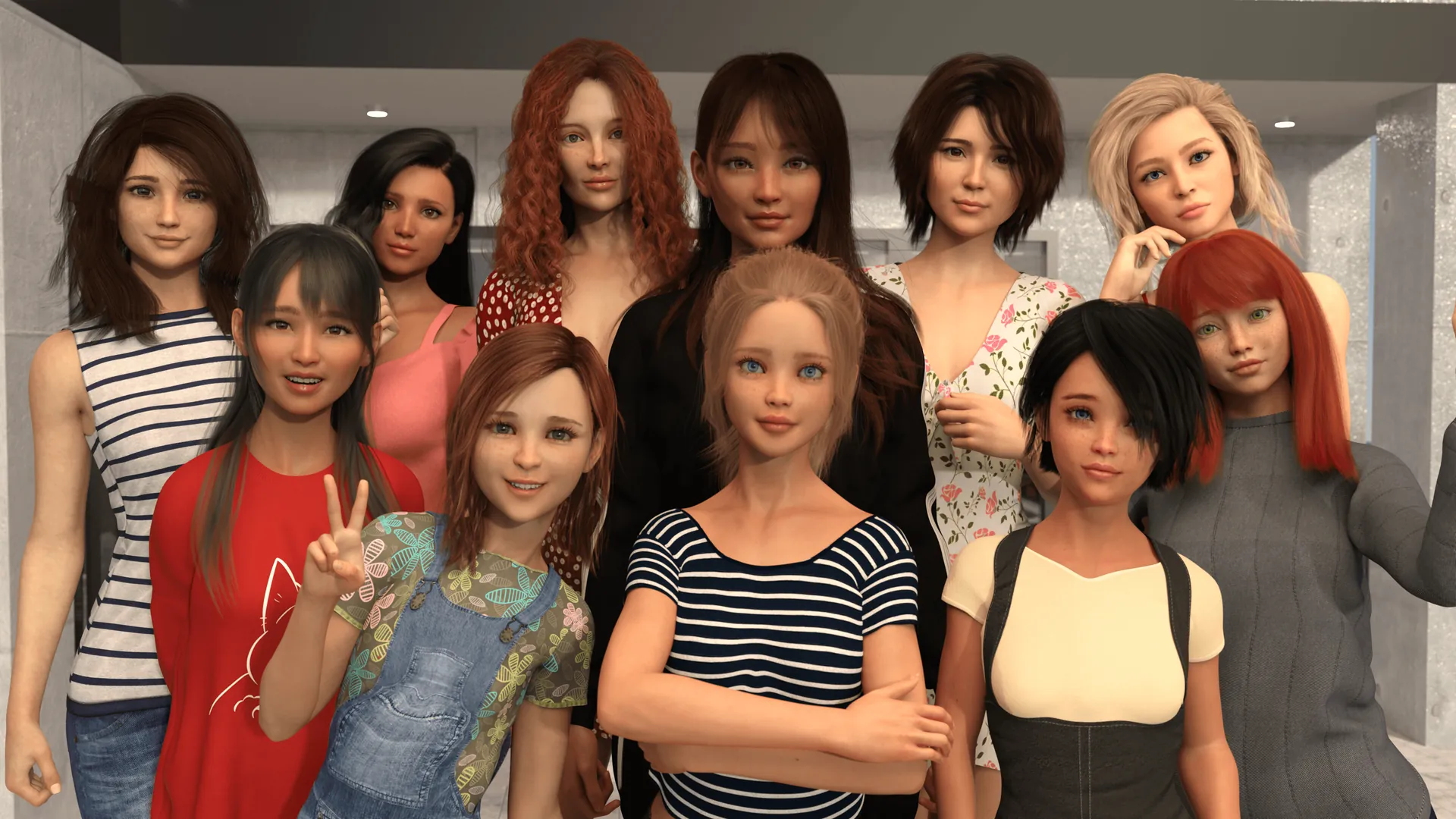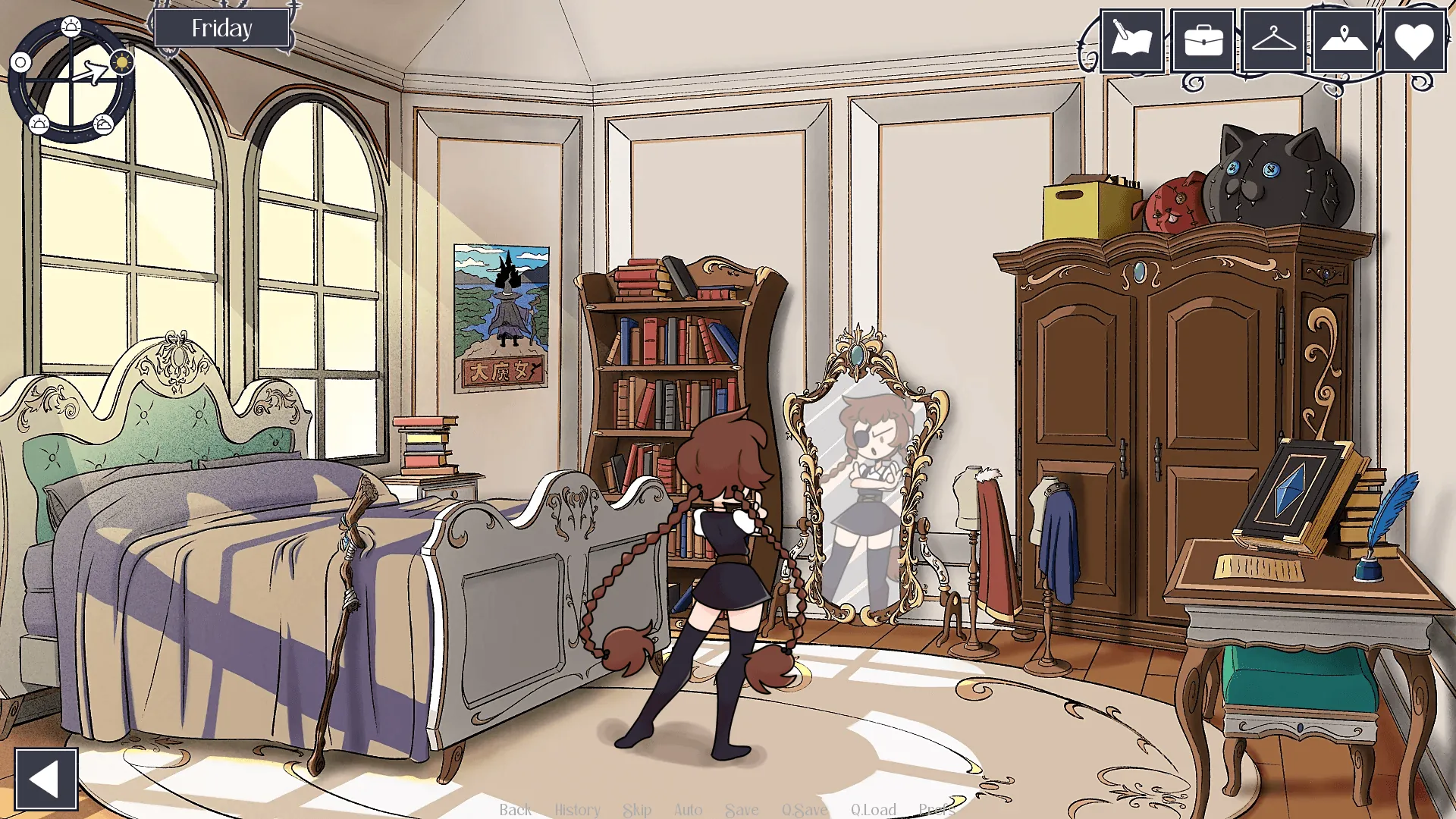
Long Story Short
Play Long Story Short
Long Story Short review
An In-Depth Look at the Gameplay, Storyline, and Features of Long Story Short
Long Story Short is a distinctive visual novel game that blends high school drama with interactive storytelling through anonymous chatrooms and alternate timelines. This game invites players to dive into the protagonist’s life, exploring relationships and choices that shape multiple endings. If you’re curious about how this game stands out in the genre and want practical insights on playing it, this article will guide you through its core elements and gameplay experience.
Understanding the Gameplay and Narrative of Long Story Short
Ever sat down to play a game and felt instantly overwhelmed by a hundred different buttons, stats, and menus? 🙈 I know I have. That’s the first thing that struck me about Long Story Short gameplay—its beautiful, refreshing simplicity. At its heart, it’s a visual novel, but it’s so much more than just clicking through text. You’re immediately pulled into a deeply personal story that unfolds across two distinct periods of time, and your only tools are your attention and your intuition. It’s a masterclass in how interactive storytelling can make you feel powerful and invested without a complex control scheme.
The magic of this anonymous chatroom story is how it uses a familiar, modern setting—a group chat—to frame a narrative that is anything but ordinary. You’re not just reading a story; you’re living inside it, making decisions that ripple across timelines. If you’re looking for a game where your voice truly matters, you’ve found it. Let’s dive into how it all works. 🚀
How Does the Game Structure Work?
The structure of Long Story Short is its most brilliant and defining feature. Think of it as a dance between the past and the present, and you’re the choreographer. 🕺
On one side of the screen, you’re in the present day, participating in an anonymous chatroom with a group of strangers. The dialogue here is snappy, modern, and full of personality. You’ll choose how to respond to questions, share (or hide) your feelings, and essentially build your persona in real-time.
On the other side, the game seamlessly transitions you into the past, where you experience the events being discussed in the chatroom firsthand. This is where the classic visual novel game mechanics shine. You watch the story unfold through beautiful artwork and dialogue, and at critical junctures, you are presented with choices. These aren’t just “Good vs. Evil” choices; they are nuanced, often awkward, and always feel incredibly human.
This dual-narrative approach is what firmly places Long Story Short in the genre of a truly compelling alternate timelines game. You’re not just watching flashbacks; you’re actively shaping them, and then immediately seeing how those shaped memories affect your conversations in the present. It’s a constant, fascinating feedback loop.
To break it down clearly, here’s a table summarizing the core components:
| Game Element | Description | Player’s Role |
|---|---|---|
| Present Day Chatroom | The framing device where the protagonist anonymously shares their story. | Choose dialogue responses to build relationships and steer the present conversation. |
| Past Story Sequences | The visual novel segments where the core narrative events happen. | Make key decisions that alter the course of past events and relationships. |
| The Narrative Bridge | How the past and present inform each other. | Observe the consequences of past actions reflected in the present-day chat. |
This structure means the Long Story Short narrative is always moving, always reacting to you. There’s no passive reading here!
What Makes the Storytelling Unique?
Forget everything you think you know about linear stories. ☄️ The Long Story Short narrative engine is built on a foundation of cause and effect that feels breathtakingly authentic. What makes it so unique isn’t just the existence of choices, but the nature of them.
In my first playthrough, I tried to be the “perfect” friend, always saying the right thing. Big mistake! The game is incredibly smart at presenting you with decisions that don’t have a clear “right” answer. 🤔 Do you tell a difficult truth to protect someone, or a kind lie to spare their feelings? Do you confront an issue head-on, or avoid it hoping it will go away? The game excels at these messy, real-life dilemmas.
The anonymous chatroom story element is the secret sauce. Because you’re recounting these past events to strangers, you have the power to frame the narrative. You can be honest, you can embellish, or you can outright omit details. This adds a whole new layer to the interactive storytelling—you’re not just changing what happened, you’re changing how it’s remembered and perceived. It’s a storytelling mechanic I haven’t seen anywhere else, and it creates this wonderful tension between the objective truth of the past and your subjective telling of it in the present.
This approach makes the Long Story Short gameplay deeply personal. Your values, your fears, and your personality directly inform your choices. It’s less about gaming the system to get a specific ending and more about honestly exploring how you would handle these situations. The uniqueness lies in its brave commitment to emotional realism over fantastical power fantasy.
How Do Player Choices Affect the Outcome?
Okay, let’s get to the heart of it: the famous player choices impact. This isn’t a game where your choices just change the last five minutes; they reshape the entire journey and its emotional core. 🔧
The game tracks your decisions, both big and small, building a unique profile of your relationships with other characters. This doesn’t just affect who likes you; it changes the story beats you experience, the conversations that are available, and ultimately, which of the multiple endings you unlock.
Pro Tip: Don’t save-scum! (That’s constantly reloading a save to test different choices). The magic of Long Story Short is living with your decisions and seeing the story you create. Embrace the imperfect journey.
Let me give you a concrete example from my playthrough. Early in the game, a friend confides in you about a personal problem. You are given a choice:
* Option A: “You should definitely tell everyone else. They can help!”
* Option B: “Maybe keep this to yourself for now until you’re sure.”
* Option C: (Say nothing and change the subject)
I chose Option B, advising caution. This seemingly small moment had massive repercussions later. Because the secret was kept, a misunderstanding erupted within the friend group that wouldn’t have happened otherwise. My attempt to be protective accidentally created a rift of mistrust. This is the player choices impact in action—a single dialogue option altering the group’s dynamic for hours of gameplay later.
The visual novel game mechanics are designed to make these moments feel weighty. The music shifts, the character sprites change expressions, and the game often gives you a quiet moment to reflect before you commit. It’s a powerful reminder that you are the author here.
Your goal is to navigate the social web of the story. Your choices influence:
* Relationship Values: Each character has a hidden affinity meter based on your interactions.
* Story Branching: Entire scenes can be locked or unlocked based on prior decisions.
* The Final Ending: The culmination of every major choice determines your final outcome, with endings ranging from bittersweet and lonely to hopeful and united.
This incredible depth of interactive storytelling ensures that no two playthroughs are exactly the same. It rewards curiosity and multiple replays to discover all the narrative possibilities hidden within this brilliant alternate timelines game. It’s a profound experience that stays with you long after you’ve put the controller down.
Long Story Short offers a compelling blend of interactive narrative and visual novel gameplay that invites players to explore complex relationships and multiple story outcomes. Its unique use of anonymous chatrooms and alternate timelines creates an engaging experience that stands out in its genre. Whether you’re a fan of story-driven games or new to visual novels, this game provides an intriguing journey worth exploring. Dive in and discover how your choices shape the protagonist’s story.





